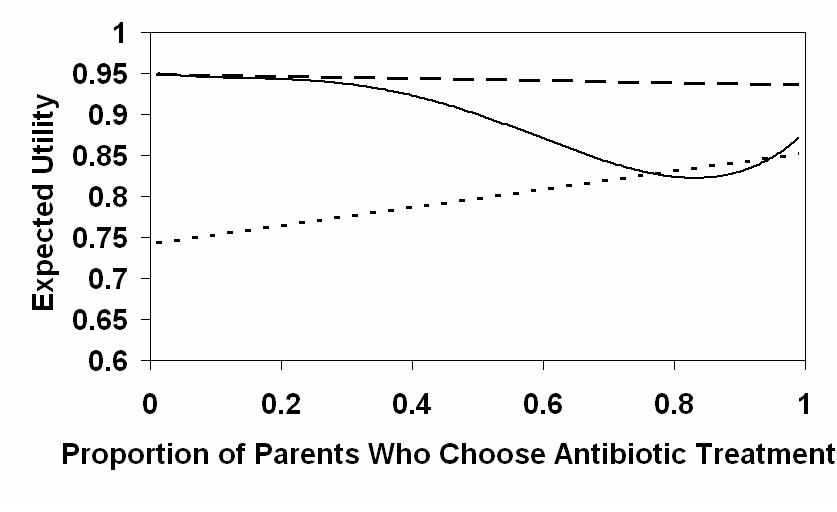|
||||
Sunday, October 21, 2007
P1-22
PATIENT VS. SOCIETY - THOMAS SCHELLING'S TIPPING POINT
Purpose: To examine whether patient's responses, presented with a multi-person prisoner's dilemma, can be modeled and whether the model's equilibriums can aid in understanding society's actual behavior. Methods: We interviewed parents of children aged two to four years and inquired as to their preferences in the management of middle ear infections. Parents were presented with the following dilemma: 1) Postpone antibiotics for 72 hours and help the overall effort to decrease antibiotic use; 2) Initiate antibiotic treatment (decreasing average disease length by 12 hours) but slightly increase overall prevalence of resistant bacteria in society. Complications rates were told to be rare and similar. Data was collected regarding parent's risk perceptions and utilities under varying behaviors of the rest of society (e.g. "How would you behave if 90%/50%/25% of other parents demanded antibiotic therapy?") Results: The figure presents a multi-person prisoner's dilemma model. The X-axis represents the proportion of parents who choose to take antibiotics. The Y-axis represents expected utility (Dotted line – utility of antibiotic treatment; Dashed line – utility of 72 hours waiting; Full line – weighted utility). Antibiotic treatment is consistently dominated by the option of postponing it. Society maximizes its utility when all members do not ask for antibiotics for their children. Society's lowest utility occurs when just over 80% of the parents choose to take antibiotics for their children and either increase or decrease in antibiotic use improves overall benefit relative to that point. Thus while antibiotic treatment is theoretically always the dominated option, both extremes of use prove to be stable equilibriums. Conclusions: Our model suggests that coercive measures leading 20% of the parents to postpone antibiotic treatment would tip society's behavior to a point where individuals would naturally prefer that option and macro-behavior would thereon continuously shift towards decreased use of antibiotics and increase of society's overall utility. However, whether actual decisions are associated with rational thoughts might not necessarily be true. Healthcare providers should prepare themselves to meet challenges where informed patients choose their personal benefit over that of society.


